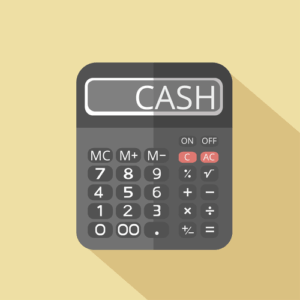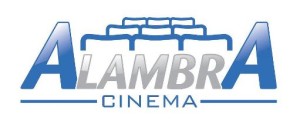
Inventory is recorded as an expense at purchase and does not accounting definition in business match the timing of sales. That means in an inventory purchasing month, the income statement shows inventory as an expense. And if the inventory isn’t selling, it is not reflected anywhere on the financial statements. Whatever accounting method you choose for your small business, creating a balance sheet with accounting software can help you keep track of incoming and outgoing cash.

Streamline your accounting and save time
Businesses using the accrual method to keep an accurate picture of accounts payable and receivable will maintain their ledgers according to the current status of a bill or invoice. If you, for example, have a long-term relationship with a particular client, there would be documentation that shows when the service was rendered, the date an invoice was generated and when the invoice was paid. The same may be true for ongoing relationships with vendors with whom you do business. Cash-basis or accrual-basis accounting are the most common methods for keeping track of revenue and expenses.
- As a result, cash accounting is often less accurate than accrual accounting in the short term.
- Cash accounting requires the business to categorize and report income and expense transactions in terms of when they occur.
- Larger corporations must use the accrual method unless they meet the IRS’ Gross Receipts Test, with average gross receipts of $26 million or less over the past three tax years (indexed for inflation).
- Similarly, if the company pays for their rent earlier than the due date, the journal entry will be recorded on the date when the rent is paid and not when the rent is due.
- In other words, revenue is recorded when cash payment is received for the sale of products or services, and expenses are recorded when cash is paid to vendors for purchases of products or services.
- When it comes to payroll, each pay period’s expenses would be accrued during the period in which they were incurred – so, you’d record the costs of paying workers as they do the work, rather than when paychecks are distributed.
Cash vs. accrual accounting: pros and cons
Cash accounting is a method that records revenues and expenses on a “when received” or “when paid” basis instead of using an account balance approach. Given below are some of the entries that is used while recording the financial cash inflow and outflow for the business using the cash basis. It is to be noted that there is no double entry involved in it where a debit and a credit is recorded in respective books of accounts, as followed in the accrual basis. If accrual accounting is not required by some third party, companies are free to select either method. Some use a combination of the two, employing the accrual method for sales and purchases of inventory and cash for other income and expenses.
Prefer watching? Explore Cash Basis VS Accrual Accounting in under 1 minute (Youtube video)
In contrast, with the accrual method, payments are recorded when earned, giving the business a better sense of the company’s actual sales and profits. Additionally, cash-basis accounting can make obtaining financing more difficult due to its high probability of inaccuracies. Cash basis accounting is advantageous because it is simpler and less expensive than accrual accounting.
Let’s consider how this would work for a construction company that is hired for building work that will take roughly four months to complete. The business has issued a quote to the client, but the final invoice will only be issued upon completion of the project after which the client will make the full payment. During the four months, the business incurs expenses for construction material required for the project as well as running costs for labor, administration, https://www.bookstime.com/ etc. Companies might also use modified accrual accounting and modified cash basis accounting. The cash basis method records these only when cash changes hands and can present more frequently changing views of profitability.
You Only Pay Income Taxes on Money You’ve Received

With this method, you record income as it’s received and expenses as they’re paid. Cash basis accounting only records your expenses when money leaves your account to pay suppliers, vendors, and other third parties. Cash basis accounting provides more transparency for stakeholders and partners – which is helpful when trying to maintain trust in a wide range of business interests. Cash accounting also enables you to create more accurate forecasts based on the transactions that have already occurred, rather than just projecting what may happen in future periods.

The cash basis is commonly used by individuals and small businesses (especially those with no inventory), since it involves the simplest accounting. In accrual accounting, revenues and expenses are recorded when they are earned, regardless of when the money is actually received or paid. Cash basis accounting is an accounting method under which income and expenses are recorded only when a cash transaction has taken place and does not recognize accounts receivable or payable. The cash method of accounting records journal entries when actual cash is exchanged.
- Cash basis accounting is easy to manage if the business or individual has a positive cash flow, which means the cash they generate from operations (like sales) is more than what they spend to keep their business running.
- While the simplicity of the single-entry system needed for the cash method can be an advantage, it also has some disadvantages.
- Under the matching principle of accrual accounting, expenses would be reflected in the period that best matches the revenue they help create, rather than simply when the cash is paid.
- We’ll explain the basics of the cash accounting and accrual accounting methods, as well as the pros and cons of each so that you can make an informed decision.
- It definitely has some disadvantages like it does not show the true financial condition of the business since it does not consider any transaction for which cash will be received in the future.
- Another principle of cash basis accounting is its alignment with actual cash flow.
Overall, cash basis accounting is a great way to simplify your accounting software needs. Additionally, cash basis accounting makes it challenging to analyze financial trends and make informed decisions about a company’s future growth and profitability. This content is for information purposes only and should not be considered legal, accounting, or tax advice, or a substitute for obtaining such advice specific to your business.

For example, if a company provides services to a customer on 1st January, 2024, but the client pays on 15th January, 2024, the accounting books will record the latter date i.e. 15th January, 2024. However, accounting standards such as the Generally Accepted Accounting Principles (GAAP) and the International Financial Reporting Standards (IFRS) consider the accrual accounting method as more accurate. assets = liabilities + equity Due to this, publicly traded companies don’t use the cash basis accounting method. Under cash basis accounting, revenue is reported on the income statement only when cash is received.

